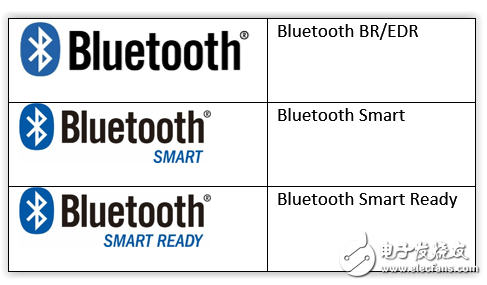Foreword:
This article mainly describes some basic knowledge and related operational procedures of Android BLE, does not involve specific business implementation, which provides analysis ideas for broadcast packets and response packets, and hopes to guide the partners who are or will face Android BLE development.
Note: The concepts such as single mode, dual mode, BR, BT, BLE, Bluetooth 3.0, Bluetooth 4.0 may be difficult to understand. I don't know if the description below is clear. If there is something you don't understand, please leave a message!
Bluetooth wireless technology is a universal short-range wireless technology that enables interconnection of multiple electronic devices through Bluetooth technology, especially in small radios, low power consumption, low cost, security, stability, and ease of use. Bluetooth wireless technology is developing rapidly due to its inherent advantages such as sex and special networking capabilities.
2, classification There are three types of Bluetooth: Bluetooth Smart Ready, Bluetooth Smart (Smart is a low-power Bluetooth logo), and standard Bluetooth. According to the Bluetooth SIG, this is to distinguish the compatibility between devices and to identify the transmission frequency of each version. Basically, Bluetooth Smart Ready is suitable for any dual-mode Bluetooth 4.0 electronics, while Bluetooth Smart is used in heart rate monitors or pedometers that use a twist-button battery and transfer a single device. Bluetooth Smart Ready is the most compatible and can communicate with Bluetooth Smart and standard Bluetooth. Standard Bluetooth cannot communicate with Bluetooth Smart.

BLE is the abbreviation of Bluetooth Low Energy, also known as Bluetooth 4.0, which is different from Bluetooth 3.0 and previous technologies. BLE, formerly known as Wibree technology developed by NOKIA, is mainly used to realize the continuous connection between mobile intelligent terminals and peripheral accessories. It is a short-distance wireless communication technology with extremely low power consumption, and the effective transmission distance is raised to more than 100 meters, and only You need a button battery to work for years. BLE is developed on the basis of Bluetooth technology, which is the same as Bluetooth and different from traditional Bluetooth. BLE devices are divided into single mode and dual mode. The dual mode is referred to as BR, the trademark is Bluetooth Smart Ready, the single mode is BLE or LE, and the trademark is Bluetooth Smart. Android only supports BLE after 4.3, which means that not all Bluetooth phones support BLE, and Bluetooth phones that support BLE are generally dual-mode. Dual mode compatible with traditional Bluetooth, can communicate with traditional Bluetooth, can also communicate with BLE, commonly used in mobile phones, android4.3 and IOS4.0 and later versions support BR, which is dual-mode devices. Single mode can only communicate with BR and single mode devices, and can't communicate with traditional Bluetooth. Because of low power consumption and long standby time, it is often used on smart devices in wristbands.
Second, the basic concept 1, Generic Access Profile (GAP)Used to control device connections and broadcasts, GAP makes your device visible to other devices and determines whether your device can or interact with contract devices.
2, Generic Attribute Profile (GATT)Through the BLE connection, the profile general specification of the attribute data is read and written. Now all BLE application profiles are based on GATT.
3. Attribute Protocol (ATT)GATT is based on ATTProtocol. ATT is specially optimized for BLE devices. Specifically, it uses as little data as possible during transmission. Each attribute has a unique UUID. The attributes will be transmitted in the form of characterisTIcs and services.
4, CharacterisTIcCharacterisTIc can be understood as a data type, which includes a value and a description of 0 to multiple values ​​(Descriptor).
5, DescriptorA description of CharacterisTIc, such as scope, unit of measure, etc.
6, ServiceA collection of Characteristics. For example, a service called "Heart Rate Monitor" may contain multiple Characteristics, which may contain a Characteristic called "heart ratemeasurement".
7, UUIDThe unique identifier, each Service, Characteristic, Descriptor, is defined by a UUID.
Third, Android BLE API 1, BluetoothGattInherit the BluetoothProfile, connect to the device (connect) via BluetoothGatt, discover the services (discoverServices), and return the corresponding properties to the BluetoothGattCallback, which can be seen as the life cycle of the Bluetooth device from the connection to the disconnection.
2, BluetoothGattCharacteristicEquivalent to a data type, can be seen as a feature or ability, it includes a value and a description of 0~n values ​​(BluetoothGattDescriptor).
3, BluetoothGattDescriptorDescriptor, a description of Characteristic, including scope, unit of measure, etc.
4, BluetoothGattServiceService, Characteristic collection.
5, BluetoothProfileA general specification that sends and receives data according to this specification.
6, BluetoothManager Get the BluetoothAdapter through the BluetoothManager.
BluetoothManager bluetoothManager = (BluetoothManager) getSystemService(Context.BLUETOOTH_SERVICE);
Represents the local Bluetooth adapter of the mobile device, through which the Bluetooth can be basically operated. An Android system has only one BluetoothAdapter, which is obtained through the BluetoothManager.
BluetoothAdapter bluetoothAdapter = bluetoothManager.getAdapter();
After scanning, discover the connectable devices and get the connected devices.
BluetoothDevice bluetoothDevice = bluetoothAdapter.getRemoteDevice(address);
ASUS ROG Strix NVIDIA GeForce RTX 2060 EVO OC Edition Axial-tech Fan Design, Auto-Extreme 6GB GDDR6 HDMI DisplayPort 1.4 Gaming Graphics Card
1.OC Edition: Boost Clock 1860 MHz (OC Mode)/ 1830 MHz (Gaming Mode)
2.NVIDIA TURING: ROG GeForce RTX graphics cards are powered by the Turing GPU architecture and the all-new RTX platform.
3.DirectX 12: Power new visual effects and rendering techniques for more lifelike gaming.
4.NVIDIA Shadowplay Record and share high-quality gameplay videos, screenshots, and livestreams with your friends.
5.Axial-tech fan design features a smaller fan hub that facilitates longer blades and a barrier ring that increases downward air pressure.
6.0dB Technology lets you enjoy light gaming in relative silence.
7.Auto-Extreme Technology uses automation to enhance reliability.
8.Super Alloy Power II includes premium alloy chokes, solid polymer capacitors, and an array of high-current power stages.
9.MaxContact Technology allows 2X more contact with the GPU chip for improved thermal transfer.
10.Aura Sync compatibility lets you customize and sync lighting effects with other compatible hardware.
8 gpu mining rig frame,graphic card price,graphics card near me,graphic card ebay,which graphic card to buy
Easy Electronic Technology Co.,Ltd , https://www.pcelectronicgroup.com